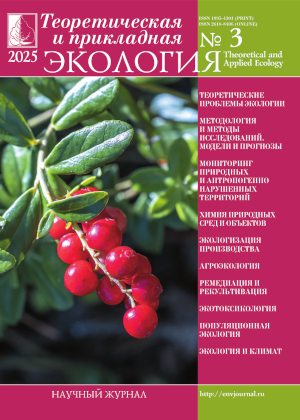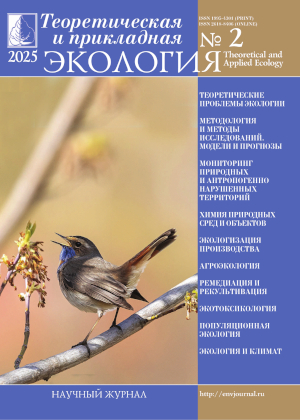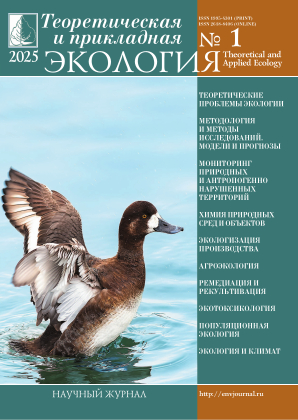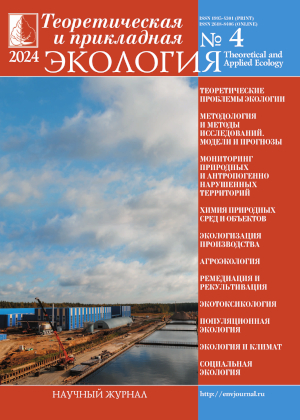 ISSN 1995-4301
ISSN 1995-4301(Print)
ISSN 2618-8406
(Online)
Online version of the journal
|
Post-pyrogenic soils of the Chara Depression larch forests (North Transbaikalia) |
||||
| Yu.K. Vasil’chuk, A.P. Ginzburg, A.C. Vasil’chuk, N.A. Budantseva, J.Yu. Vasil’chuk | ||||
| Section: Chemistry of natural environments and objects |
||||
| We looked at the soil profiles on the first Holocene terrace of the Chara River, where the Belen’kiy stream flows into it (Transbaikalia, Russia), to find out how wildfires change the post-pyrogenic soil properties in the intermontane depressions of North Transbaikalia. In 1994 and 2019 forest fires affected the soil. Studied soils were classified as gleysols of the permafrost subtype (Cryosols Reductaquic Pyric). All soils showed signs of pyrogenesis. Values of pHwater varied within the range of 3.9–5.1, pHKCl – varied from 3.5 to 4.9, and hydrolytic acidity varied from 3.3 to 4.5 cmol(+)/kg. Thus, the pyrogenic process did not impact the soil solution pH significantly. Total organic carbon content, which reached 8.7% in post-pyrogenic soil horizons, probably increased as a result of vegetation combustion. Soils have a lot of particles with sizes between 0.01% and 0.025 mm (more than 35%), and after the fire, the post-pyrogenic horizons lose most of the fine particles (<0.01 mm). The leaching of Si, Al, Sr, Zr, and Rb is an explicit indication of wildfire transformation. The radial differentiation coefficients of macroelements were 0.5–0.7 (Al) and 0.7–0.9 (Si) in the soil profiles. Recently burnt soil horizons were characterized by the depletion of trace elements (RSr=0.2, RZr=0.2, RRb=0.8), however in the older post-pyrogenic horizon, oppositely, the strong accumulation of these trace elements was observed: RSr=4.0, RZr=7.7, RRb=3.1. These data will aid in determining the influence of pyrogenic factors on the physical and chemical characteristics of soils exposed to combustion. | ||||
| Keywords: physical and chemical soils properties, forest fires, post pyrogenic transformation, profile distributions |
||||
| Link | ||||
   |
||||
| Article published in number 1 for 2025 DOI: 10.25750/1995-4301-2024-4-130-139 |
||||
|
|
36, Moskovskya street, Kirov, 610000, Editorial Board "Theoretical and Applied Ecology." Phone/fax: (8332) 37-02-77 e-mail: envjournal@vyatsu.ru The journal was founded in 2007 |
||||||




 Select viewing options
Select viewing options